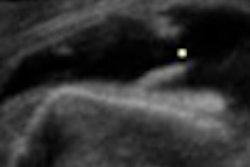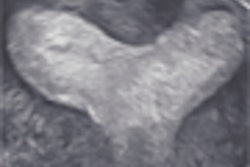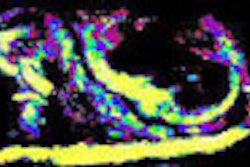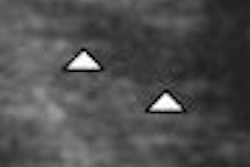The routine use of tissue Doppler echocardiography as opposed to standard echocardiography can provide more useful information to doctors and patients who may be at risk of heart failure events, according to Danish researchers.
The randomly selected participants in the 2002 Fourth Copenhagen City Heart Study were followed for more than five years, giving researchers the opportunity to evaluate how the new imaging modality performed as a diagnostic and prognostic strategy compared to standard echo.
"Abnormal conventional echocardiography had no predictive value in a multiple Cox proportional hazards regression model," said Dr. Rasmus Møgelvang at the 2008 American College of Cardiology (ACC) meeting in Chicago.
Over five years, individuals identified by tissue Doppler as having cardiac dysfunction had three times the risk of death compared to those who were assessed as normal, according to Møgelvang, a professor of cardiology at Gentofte Hospital in Copenhagen, Denmark.
"Tissue Doppler ... identified persons with high risk of dying during the follow-up period, and it was definitely superior to conventional echocardiography," Møgelvang said in his presentation. "Our results may pave the way for the introduction of tissue Doppler imaging into standard clinical echocardiographic examination. The information it gives could allow patients to take measures proactively to prevent or delay their death from heart disease."
Tissue Doppler echo uses Doppler principles to measure myocardial velocities through the manipulation of Doppler filters, enabling registration of the direction and velocity of motion in a sample volume of the myocardium.
Tissue Doppler can be used to calculate tissue velocity, strain, and strain rate by comparing velocities at two adjacent points. These measurements are useful in evaluating several disease processes, such as cardiomyopathy, and in emerging applications, such as right ventricular function assessment and left ventricular filling pressure estimates.
In their population-based study, Møgelvang and colleagues performed both standard echocardiography and tissue Doppler imaging on 1,036 patients in the Copenhagen City Heart Study. Using a formula based on peak myocardial systolic values, peak myocardial diastolic values, and peak late diastolic values from six mitral annular sites, the researchers were able to place patients in tertiles of high, medium, and low categories.
When they looked at the results on Kaplan-Meier survival curves, the patient groups diverged significantly. After five years, about 95% of patients with high values were still alive, compared with about 91% of patients in the second tertile or medium values. About 86% of patients who registered low scores in the formula were alive after five years. The difference between high and low scores was statistically significant (p < 0.003), Møgelvang said.
"Adults over the age of 40 have a 20% lifetime risk of developing heart failure, a condition with high morbidity and mortality," he said. "Echocardiography, together with a history and physical examination, has been an essential part of the evaluation of patients with suspected heart failure. However, (standard) echo reveals evidence of heart failure in only half of affected individuals."
The researchers adjusted the finding to account for differences in clinical information, such as age, sex, body mass index, heart rate, diabetes, hypertension, and ischemic heart disease.
"Tissue Doppler imaging is a powerful prognosticator, even in the presence of a normal conventional echocardiographic examination," Møgelvang said. Combining the information of systolic and diastolic performance strengthens the prognostic value of tissue Doppler imaging."
By Edward Susman
AuntMinnie.com contributing writer
April 11, 2008
Related Reading
Ultrasound contrast agents appear safe despite FDA warning, April 1, 2008
Tissue Doppler aids pulmonary hypertension assessment, March 12, 2007
Atrial strain rate tied to function after cardioversion, January 1, 2007
Myocardial functional reserve reduced in hypertension and diabetes, September 7, 2006
Echo functionality grows with processing power, August 31, 2006
Copyright © 2008 AuntMinnie.com



















